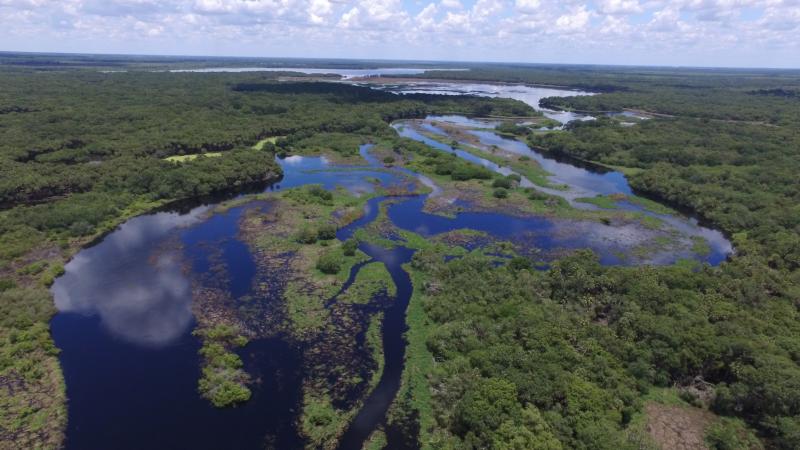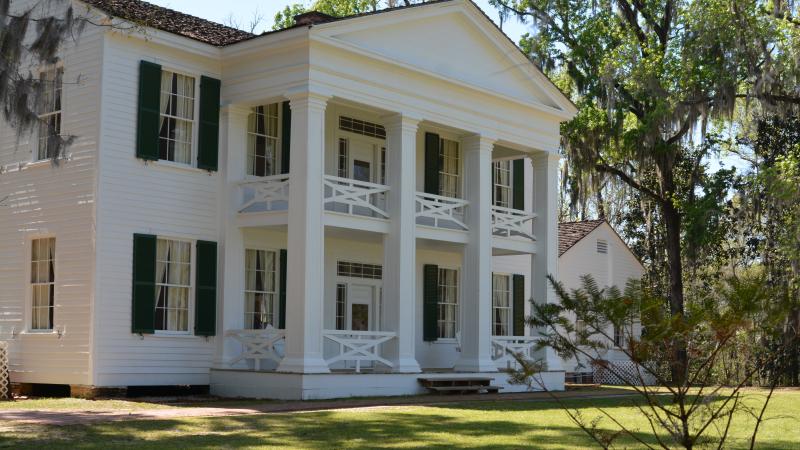The Thursby House

Louis Thursby, one of the area’s first European settlers, came here with his family in 1857. He hoped that being close to the river would help him to grow wealthy, and so he built an orange grove and a pier for passing steamships. The Thursby house is preserved as it looked at the turn of the 19th century, capturing Florida in a momentous period of transition between frontier and modern state.
Although the Thursby house is approaching its 150th birthday, it’s young when put in perspective of the area’s long, long history. Extensive archaeological research at Blue Spring State Park and the neighboring Hontoon Island State Park has revealed approximately 6,000 years of Native American inhabitation.
In fact, the Thursby house was built on top of a rich archaeological site, a shell midden. A midden, or mound, is a large pile of debris left behind by prehistoric societies. Sometimes, they left simple piles of trash and refuse. Other middens were intentionally constructed for ceremonial purposes, or to elevate a building. Blue Spring State Park has many middens, and archaeologists have learned much about the people who lived here by investigating the middens. Artifacts found within middens hold clues about prehistoric inhabitants’ diet, funeral traditions, crafts, agriculture, trade, settlement patterns and how they used their environment.
The Thursby house is now a museum and interpretive center. From steamship to railroad and candles to electric bulbs, Blue Spring State Park is a time capsule for a bygone era. Ask a ranger about the middens or other archaeological sites within the park!


